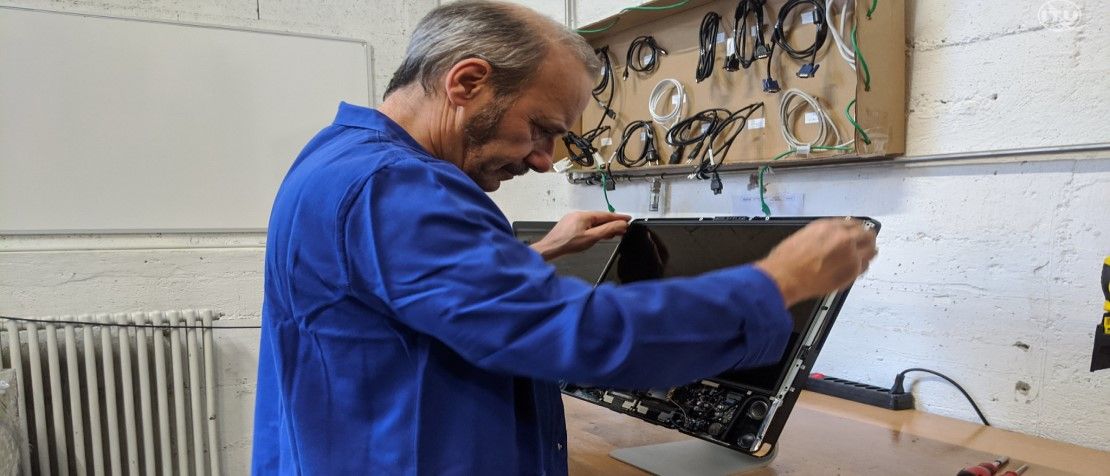
France’s Repairability Index inches toward circular economy
France’s new requirements for longer-lasting electronics aim to encourage maintenance and consequently reduce electrical and electronic waste (e-waste) from discarded devices and appliances.
The country’s new Repairability Index also represents a key first step towards a circular economy for digital tech and household goods.
As of the start of this year, France became the first European country to implement a legally binding repairability index, with a new set of criteria for manufacturers spanning five types of electronics and home appliances.
The new Anti-waste Law (2020-105), also described as a ‘law against waste and for the circular economy’, requires producers of electronic devices such as smartphones, TVs, and laptops to disclose how ‘repairable’ their products are on a scale of one to ten.
The resulting Repairability Index aims to counter so-called ‘planned obsolescence’, whereby deliberately finite product life cycles force consumers to replace or purchase newer models of equipment rather than repair existing ones.
Each product’s repairability score is based on a range of criteria, including the availability of spare parts and ease of disassembly. Several manufacturers have already released product scores, ahead of the French government’s plans to enforce the index with fines next year.
From repairability to durability
By 2024, France plans to replace its Repairability Index with a Durability Index, whereby manufacturers will disclose not only how repairable their goods are but also describe the full lifecycle for each product.
Both indices are designed to give consumers the right to opt for longer product lifespans, with the broader aim of pressuring manufacturers to make devices and appliances last longer.
France will not be the only European country to push the Right to Repair agenda forward through such indices. Still, with anything that runs on a plug or battery creating potential e-waste if discarded, much remains to be done to achieve a circular economy anywhere.
Why go circular?
In contrast to the linear models for production and consumption that currently prevail, the circular economy approach minimizes primary material inputs and prevents all kinds of waste.
The need to go circular has become especially pressing as digitalization continues to grow and with it – the consumption of electronic devices.
“Moving towards a circular economy is vital for environmental, health and societal reasons, but it also makes sense in economic terms,” says Vanessa Gray, Head of ITU’s Environment and Emergency Telecommunications Division.
“Circular electronic value chains can replace current linear economic models that depend on limited natural resources.”
Out of 53.6 million tonnes of e-waste generated globally in 2019, only 17.4 per cent was officially registered for collection and recycling, according to the Global E-waste Monitor 2020. Researchers expect annually generated e-waste to reach 74.7 million tonnes by 2030.
The Global E-waste Monitor report is produced by the International Telecommunication Union (ITU) and the United Nations Institute for Training and Research (UNITAR), as part of the Global E-waste Statistics Partnership.
Digital solutions can play a key role in curbing the dangerous trend of rising water electrical and electronic equipment (WEEE), also known as e-waste, notes a new thought paper from ITU, the WEEE Forum, the GSMA and international sustainability consultancy Sofies Group. According to the paper, digital technologies provide an opportunity to transition to a circular electronic value chain more effectively, inclusively and fairly.
Just as digital tech boost can help producers make information available, it also makes circularity more accessible and convenient for consumers. The paper highlights emerging technologies and solutions to step up the transition to circular economies.
Stay in the loop
To learn more about the role of digitalization in the transition to a circular electronics value chain, join the discussion on the new thought paper at a webinar on 26 October.
Hosted jointly by ITU, the WEEE Forum, the GSMA and Sofies Group, the webinar will bring together producers, producer responsibility organizations, digital sustainability solution providers, and other key organizations for a panel discussion followed by questions and answers.
Secure your spot here.
Image credit: ITU
